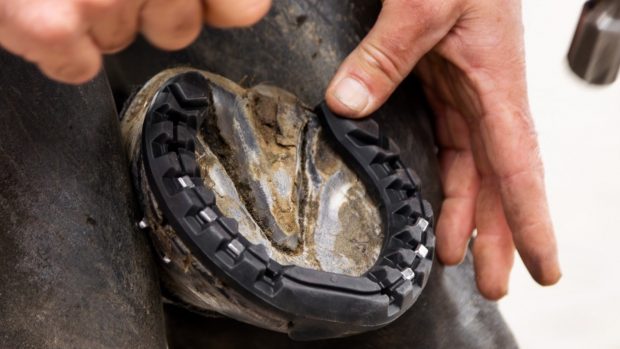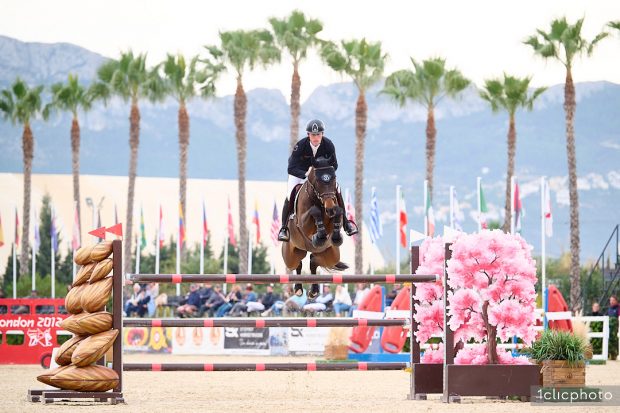Rick Farr of Farr & Pursey Equine Vets shares his expert advice on the pros and cons of going barefoot with horses and ponies
Q: Why do horses need shoes? “I’m looking for information and people’s experiences of going from shod to unshod. It’s something I know very little about as I have only ever dealt with shod horses. I have a Welsh section D with great feet who was unshod when I bought him but he was just broken and in very little work. He’s now had shoes on for two years. At the moment we just hack, but I’m looking to get going with jumping (and eventually low level competing/riding club/pleasure rides). My main concern about going unshod is how his feet will cope with roadwork and tracks. Any information would be great — what is your professional opinion on horses going barefoot and what are the benefits and drawbacks?”
A: This is always an interesting question and I feel there is no one answer to “should my horse wear shoes?” However, every owner should consider the following points before making a decision with their own horse.
Firstly, a bit of a history lesson…
One of the archaeological beliefs is that, just over 2,000 years ago, the Romans were the first to fit pads to the bottom of horses’ feet. The concept of a ‘nailed-on’ shoe doesn’t seem to appear in the archaeological timeline until approximately AD 500-600; so why did people try to “add to” the horse’s foot? In essence, it is widely believed to be because of domestic work demands and the ground on which the horses and mules walked on; it was essentially for protection.
Continued below…
Related articles:
I believe that, under the right circumstances, almost any horse can go barefoot and if I had the choice I would prefer horses to go unshod. However, it should be made very clear that the unshod foot in the domestic situation can be compromised if the following are not taken into account:
• No foot is perfect, however conformational imbalances can be made significantly worse if the hoof capsule is not supported and balanced correctly. Assessment of the static conformation and dynamic foot flight is imperative in order to maintain the stability of the foot. This should be assessed regularly and addressed accordingly. If your horse has ‘balance’ issues, it is likely it would benefit from being shod.
• If your horse has been shod in the past and has wear on the shoe, you should ask yourself “would a bare foot withstand the same amount of wear?”
I would also highly recommend clients to consider the following:
• Does your horse have good hoof growth? Common reasons for a lack of growth can include an imbalanced foot or even a poor diet. Poor growth will likely result in a decreased ability to withstand concussive forces, particularly on hard ground. If you are considering transitioning to barefoot, then it’s likely you will need to review your feeding regime.
• Age is an important factor. Very young horses (foals) have a degree of ‘plasticity’ to their hoof capsule, which can be beneficial when trying to correct anatomical deformities.
• What work do you undertake with your horse? Work on tarmac, concrete and stony ground will obviously cause more abrasive wear to the hoof capsule. The unshod foot may not cope with the increased degree of insult, compared to work on soft ground.
• How fast does your horse usually wear their foot out? Some horses’ feet can withstand a large amount of concussion and abrasion without issue. However, others crack, flare and crumble at the edges more readily. You know your horse… which is it?
• The weight of horse has a dramatic impact on the degree of wear. Obviously a heavier horse on hard ground is likely to wear out the foot quicker compared to a lightweight pony on grass.
• If your horse has any concurrent disease, for example Cushing’s or metabolic syndrome. Both of these conditions increase the risk of changes within the hoof capsule, which could be exacerbated by uneven concussion and wear as a result of a unbalanced foot.
• The breed of the horse also plays a role. Certain breeds are more susceptible to foot imbalances and flat/thin soles. Once again, these imbalances put excessive strain on the hoof capsule which, if left, could result in injury. For example, thin soles in Thoroughbreds and very boxy, upright feet in Warmbloods. Luckily some of our native breeds seem to be less plagued by these problems.
• Does you horse have any history of laminitis? I personally don’t think any laminitic can be managed without active remedial farriery, which is often only attained by being shod.
• Horses requiring extensive remedial work due to conditions such as cracks, chronic seedy toe resulting in hoof wall resection, collapsed heels etc all require being shod.
• I should also mention the actual placement of a shoe does cause a degree of trauma to the foot. Driving nails into the hoof wall can cause issues if done incorrectly and can even be a potential source of infection (albeit mild).
In essence, I believe every case is an individual and you should not only take advice from your vet, but also a qualified and registered farrier. In your specific case I would probably suggest to stay shod. Although Welsh Ds usually have good feet, the addition of roads and tracks and increased load with the work your horse is likely to benefit from the support of horseshoes. However, never forget that you can always take the shoes off if they appear to be detrimental.





